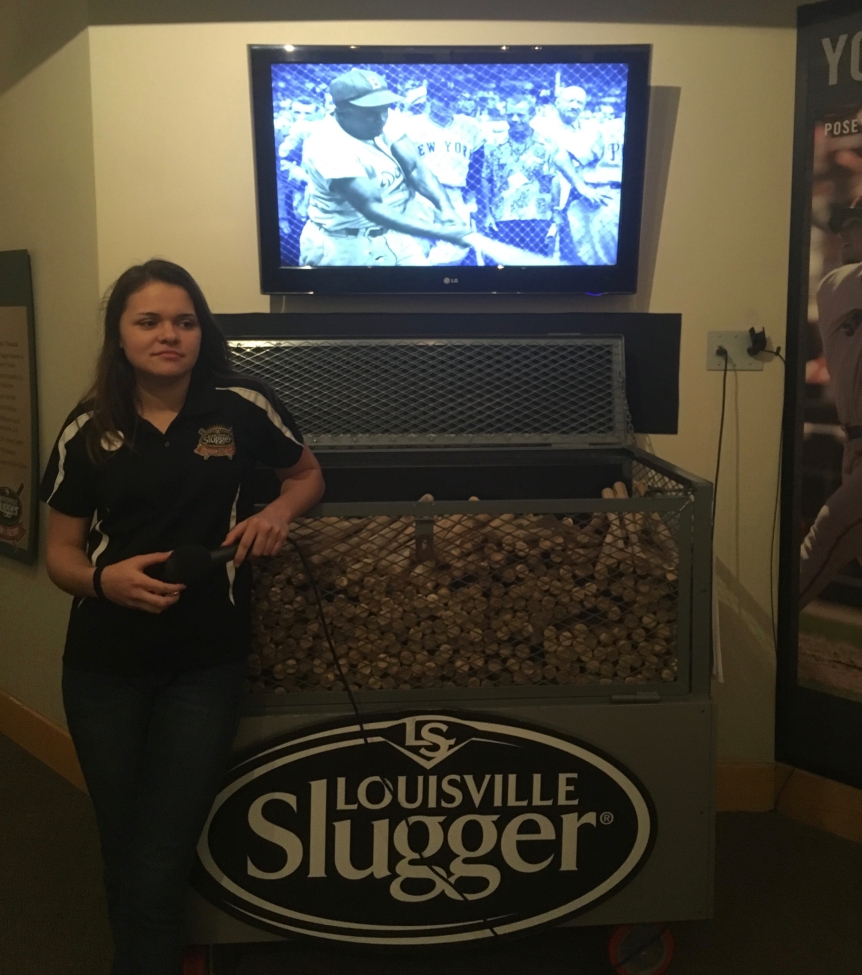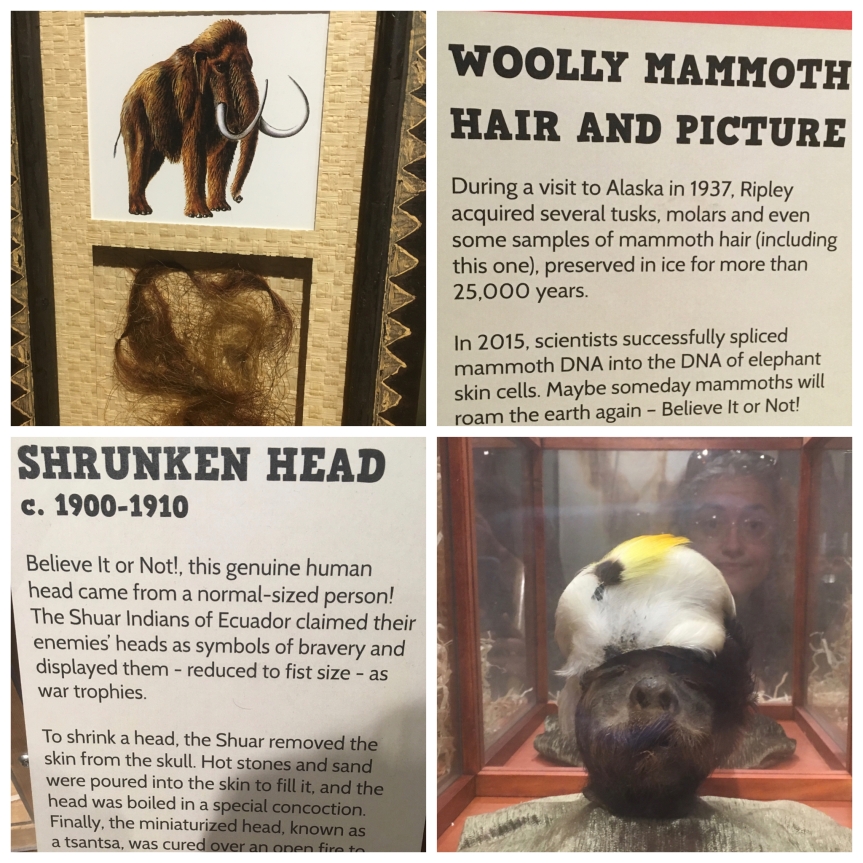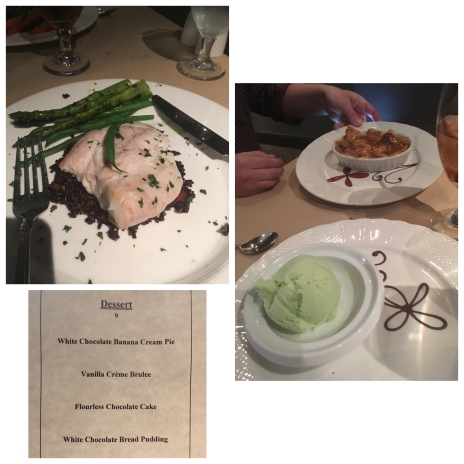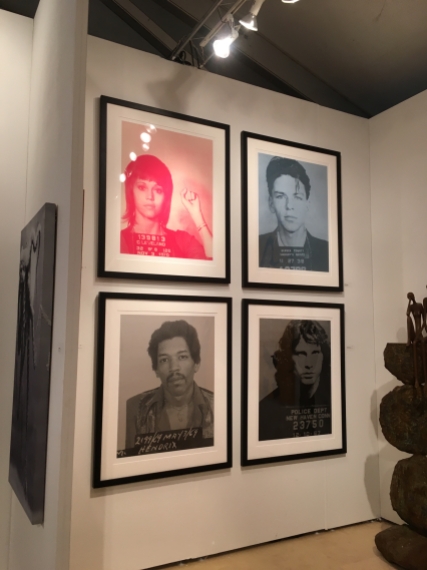What the name suggests: it’s very touristy, but interesting; and worth driving by, if only to see the worlds largest baseball bat (but made of carbon steel, not wood). It is an oversized replica of the bat the Louisville Slugger company made for Babe Ruth (aka, ‘The Bambino’ or ‘The Sultan of Swat’) in the 1920s.

Among the sources I used when planning my trips, there’s a web-page/iPhone app resource that I use, called Roadtrippers.com where you can load in your destinations, and the application/web site will pop up a list of all the various things you might want to consider stopping at along the way (in its “oddities” category, which I love). You chose the ones you want, and then on your iPhone you load the list… HOWEVER, I have also found that the addresses appended to those locations are NOT always correct, so it’s best to then double check them with google. (For instance, on this day I was TRYING to get to the Louisville Slugger museum which is in downtown Louisville, and got misdirected to a residential neighborhood in what seemed to be the worst part of Louisville (really run down). But there were factories there so I thought MAYBE this right… till I ended up on a residential street. That said, it wasn’t a complete waste, as I learned from the myriad of signs (advertising the fact), that this was the neighborhood where Muhammad Ali, formerly known as Cassius Clay, had been born.)
I then (thank the lord for the iPhone and cellphone data plans — folks not old enough to remember a time before such things don’t appreciate just how magical it is) googled the attraction and found the correct address, which was a good thing because an old friend of mine was actually driving in from her small town in Indiana (two hours away) to meet up with me there.
As I waited for her (she was, thankfully, running late as well) I discovered that Louisville has done something very smart, they’re historic downtown is full of these amazingly beautiful historic buildings. When the area got run down and the businesses for the most part left for safer neighborhoods, they ‘restored’ most of them, by leaving the amazing facades and ripping out everything behind it. Most of these buildings they then filled up with museums and other touristy attractions. So there’s now a ‘historic’ museum row / tourist mecca that is centrally located with most of what you’d (as a tourist) want to see when visiting Louisville.

Just out front of the Museum was a fairly in-congruent statue of Captain America… I have no idea WHY it was there, but it was pretty cool… and purely coincidentally, it matched my shirt.

But it may have been reflective of the large number of street pieces along Museum row, of which I only photographed a few.

And then lining the sides of the museum were these highly inconspicuous, to the point of one almost tripped me… little memorials to various famous players who had preferred the Louisville slugger bat.

The first (and last thing) you see upon entering the building is the gift shop, which impressive in it’s own right, with everything from key chains and bumper stickers to collectors items, like baseballs signed by some of the greats, which you can buy.

The one things that I found “tempting” was walking sticks made out of mini baseball bats. As I’ve discussed previously I’ve been suffering from periodic bouts of benign positional vertigo now for about 15 years, so for me walking sticks are useful, AND these could double as a self-defense weapon.
that said, the Baseball Bat Museum is reasonably priced (see below); but that said, my friend and I were actually able to get in for FREE!! (can’t beat free). It was an off-season weekday, and the tour, which was just about to begin, was far from sold out; as such they were just handing out the tickets. (This made me think that the store is far more profitable than the museum itself, while the latter draws new customers to the former.)

In the waiting area before the factory tour there’s a museum devoted to Louisville Slugger bats, and baseball in general.

In it, there’s a batting cage area where you can put on gloves, and get to hold and test the weights of various bats that were ACTUALLY used by some the greats.

In addition to an extensive collection of memorabilia, and explanations about the history of baseball, there are also Madame Tussauds type wax figures of some of the greats that you can can go right up to, take your picture with — and I saw some people touching them.

At a certain time, an announcement is made, and all the people wandering through the museum file into a loading area, and watch a movie loaded with facts and figures regarding the production and sale of Louisville slugger bats.

After the movie, we walked through the factory area, with demonstrations of bats being made by hand (solely for the purpose of the tour), and then there are explanations of how they are made now. There are low tech systems, which are used to make bats for sale to the general public, or little league teams. One interesting factoid she shared was that, if you’re a baseball player in the minor leagues, odds are you’ll use a custom made bat to your preferred configurations, however, you have to pay for your own bats, the teams don’t pay for them for you — while they DO pay for the major league players‘ bats.

But, on the seemly unrelated topic of “why the jobs are not coming back” — a conversation I had had a few weeks before with a progressive liberal friend who was sure Bernie Sanders would be able to do this (I spent a few hours trying, but failing, to convince him otherwise…. I now offer the case of the Louisville Slugger:
According to our tour guide, it used to be that the bats were all turned by hand on the lave, each one taking about four hours of very careful shaving, smoothing and measuring to produce. Then, the industrial revolution reached baseball, and the bats were, and (for the most part) continue to be produced by a factory mechanized system which, while nowhere near as precise, allowed them to make bats that were much cheaper and therefore able to reach a broader market; and as I said, these are the ones that are today sold to the home market, Little League’s, and customers like that. Then they showed us a brand new very expensive computerized machine that, in just one hour can produce the entire needs of a major-league team … THREE times over. They spoke of it with great pride, noting that at that moment it was making special order bats for the Chicago Cubs that were painted blue and said “World Series champions” — having just broken their 108 year losing streak by beating the Cleveland Indians, who were the 2nd most losing team in the country. And everyone in the group was all happy and impressed until I chirped up…
Question: “You said that untill the computerized system arrived professional bats, for minor league and National league players, were made by hand… correct?”
“yes”
“Then, could you tell me HOW many workers this one machine put out of work?”
Suffice it to say the girl leading the tour didn’t look happy, and the people in my tour group looked at me annoyed (how dare I point out the obvious)… She didn’t know but promised to get the answer by the end of the tour, which was that this one computerized machine has replaced/made redundant 50 highly skilled workers.
Jobs that be done cheaper aboard, enough so that the added shipping still results in a cheaper product than what can be produced at home will be produced abroad. At a certain point, labors who previously were happy with 10 cents an hour are now asking for $1.50, and that becomes no longer true. AT THAT POINT, it then becomes cheaper to invest in a computerized production system that can do a job as well as any skilled laborer, only much quicker…. And THAT ladies and gentleman is why the jobs aren’t coming back.
After the tour was over we were taken into a final room, and were allowed to choose our only miniature baseball bats out of the bin in this picture, to take home as a souveigner.

And then towards the back of the building there is an actual batters cage where you can try out your skills against an automated pitcher, using different types and weights of bats produced by the company.

On one side of the building that houses the factory tour, they also have a small Ripleys believe it or not subsection (believe it or not… seriously WHAT is this doing here?). Most of what’s there is less the “believe it or not” sort of stuff that would show up in a circus side show, and more art in utilizing “unusual” mediums, so like duct tape, chewing gum or nuts, but some of it is the more exotic stuff — at Louisville Slugger Museum & Factory.



After we finished with the museum, and walking around the downtown area we headed back to the neighborhood I had been to the day before, where Zachary Taylor’s grave yard is. We HAD wanted to have dinner downtown, but a staff member in the museum had STRONGLY warned us against it, saying that once the businesses had closed up it would quickly become an unsafe neighborhood. As such, I suggested that we go to the same restaurant I had gone to the night before, a place with AMAZING food in a neighborhood full of what looked to be multi-million dollar homes.

Anoosh Bistro was a restaurant I had found the day before using Yelp. The first time I came I was deeply impressed with how Anoosh and his wait staff were HIGHLY accommodating to my medical dietary needs. The first time I had the Cioppino (Fresh Fish, Shrimp, King Crab, Mussels, Clams, Tomato Saffron Clam Broth — all of which was incredibly fresh, and there was so much fish that I ended up taking home half) & the poached pear salad, which was incredibly tasty — I ate the salad before the meal and saved the pear for my desert (there was SO much alcohol in the pear that it left me tipsy).

As I was leaving, the first time, I discovered that this place is actually halal (the owner is Lebanese — considered by many to have the best pallet in the middle east) — which is a good thing.
This time, with my old friend from University … I had the red snapper special with black rice and vegetables (they had modified it to meet my dietary needs) while she had the chicken curry which smelled amazing… and both of us were doing the ‘happy food dance’… Although Andie ate my carrots for me cause I hate cooked carrots (and they’re not good for me either, too much sugar) while I ate her asparagus for her…. She said my carrots were also amazing.

Then, for dessert — something I generally skip unless they have fresh berries… she ordered the white chocolate bread pudding with their home made pistachio ice cream in place of vanilla. I had a tiny taste of both and they were amazing… especially the ice cream which we were sure was made in house… (we tasted a tiny undercurrent of rose water in it).
My Dad would’ve approved (and he always really liked Andie, and he loved bread pudding). As she ate it (I did have a small taste) we were remembering the one time my dad made her dinner, and it was mind-blowingly amazing… but it was one of these things where he just kind of improvised with whatever happened to be in the house, so that afterwards he could never duplicate it because he could never remember how he got there.



































 Truth be told, I hadn’t come to Jeffersonville in order to see the town, even though having seen it I would happily categorize it as a destination in and of itself, but rather U had come here because of
Truth be told, I hadn’t come to Jeffersonville in order to see the town, even though having seen it I would happily categorize it as a destination in and of itself, but rather U had come here because of 
 I came here because I thought there was going to be a factory tour but there is not — they just do demonstrations of what they’re making that day.
I came here because I thought there was going to be a factory tour but there is not — they just do demonstrations of what they’re making that day. They’re famous for their red hots, but today they were making Christmas candy.
They’re famous for their red hots, but today they were making Christmas candy.











